Thanks to Boldmethod for sharing...

Turboprop engines combine the reliability of jets, with the efficiency of propeller driven aircraft at low to mid altitudes. Found on anything from a 50+ seat passenger aircraft to a single pilot cropduster, turboprop engines are perfect for safe, efficient regional travel. This is how they work...
Of all turboprop engines, one of the most popular is the Pratt & Whitney PT6. More than 41,000 PT6A engines have been produced since the family entered service in the 1960s, accumulating over 335 million flying hours. The 69 PT6 models range in power from 500 shaft-horsepower (SHP) to over 2,000 SHP. While not all turboprop engines work exactly like the PT6, they all follow the same basic concepts. Because of its widespread popularity, it's a great example to focus on.
Reverse Flow
Unlike turbofan or turbojet aircraft, air moves through turboprops like the PT6 by reverse flow.
Large air intakes underneath or beside the propeller scoop air into the intakes, where it moves backwards towards the engine firewall. Upon reaching the aft limit of the intake, the air makes a 180 degree turn back towards the front of the aircraft.
In addition to that, air reverses direction again when it reaches the combustor, allowing for a shorter, more compact engine.
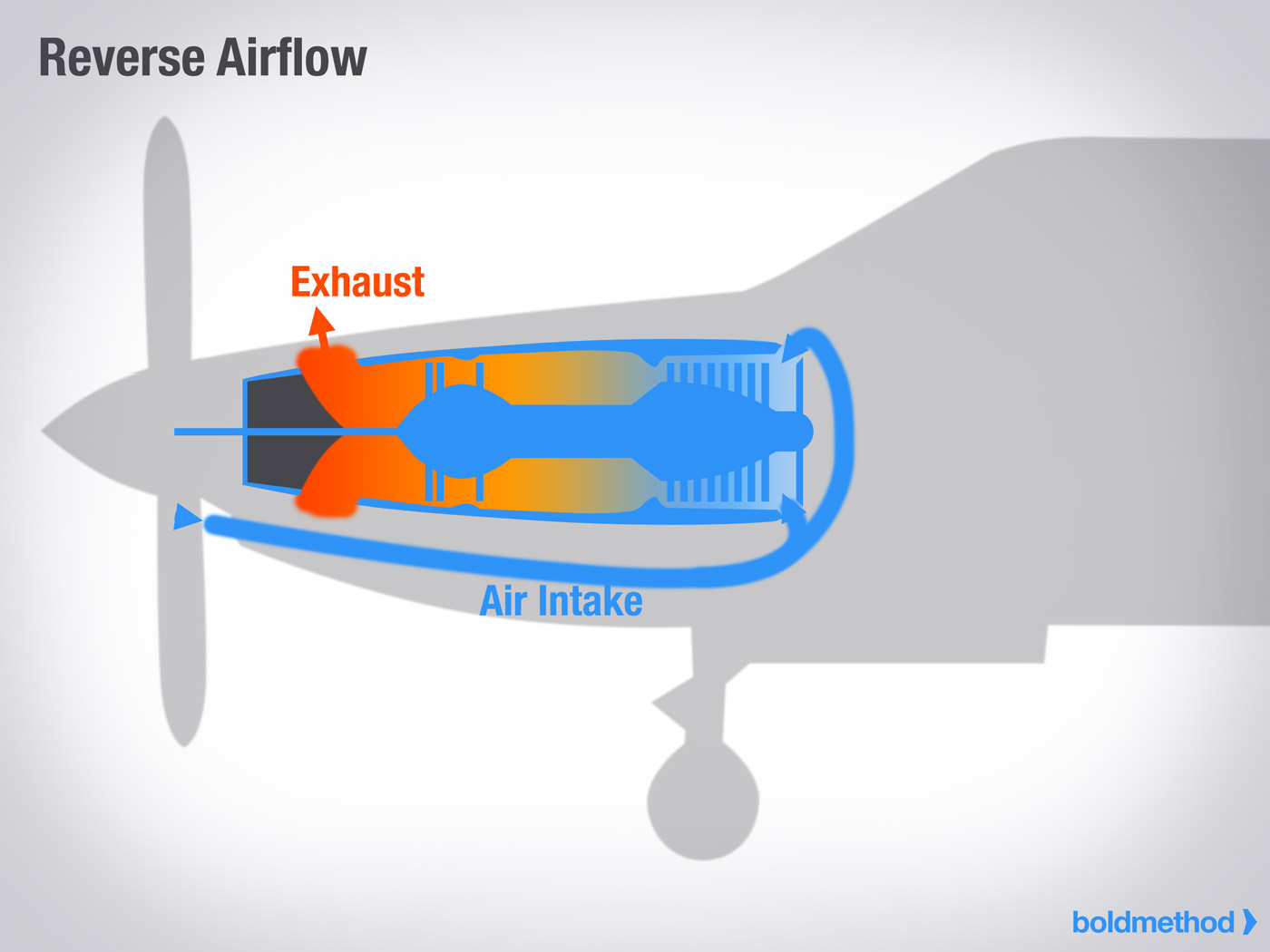
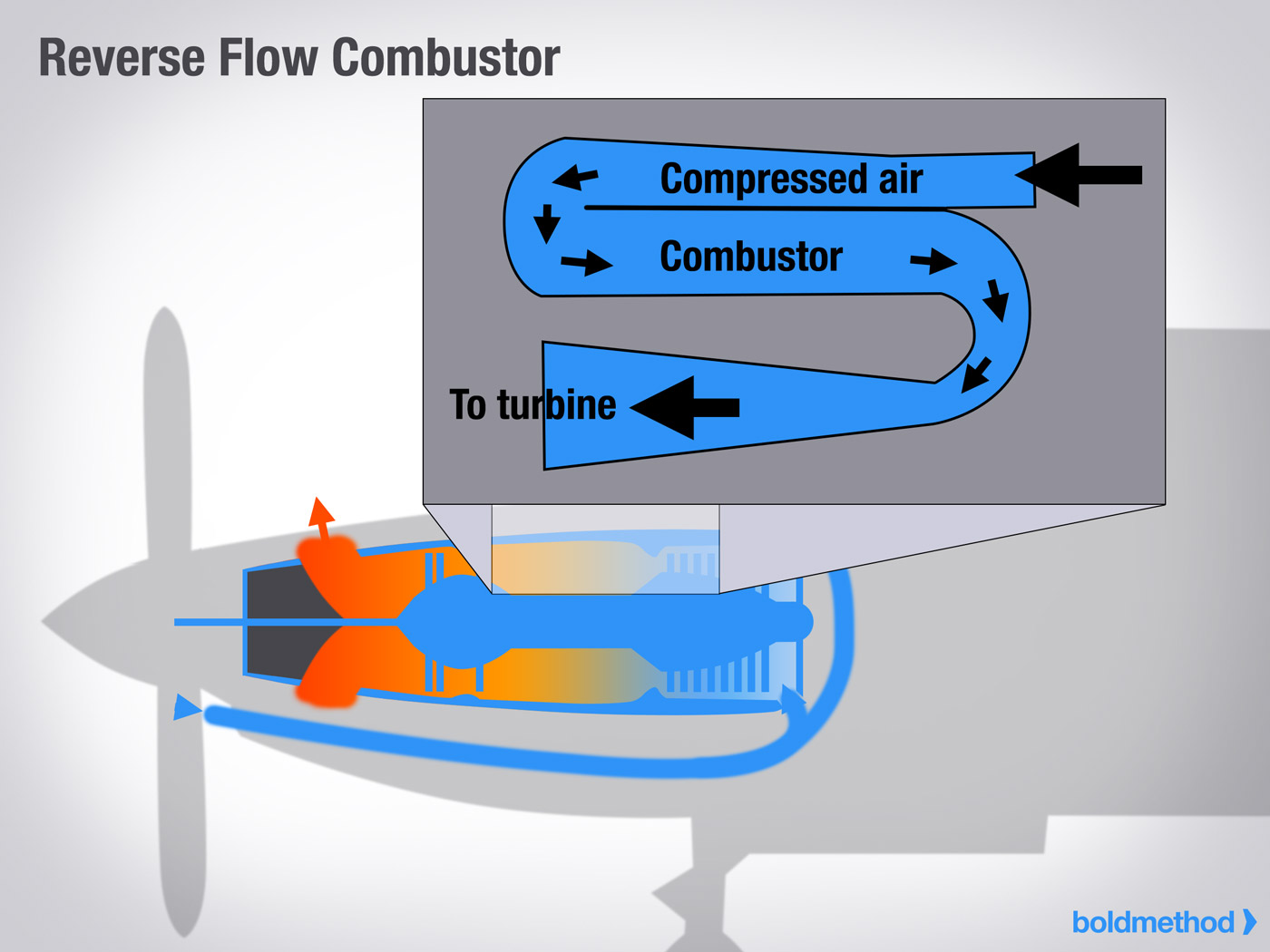
Compression
The first compressor stages, which are 'axial flow', use a series of airfoil shaped spinning blades to speed up and compress the air. It's called axial flow, because the air passes through the engine in a direction parallel to the shaft of the engine. As the air moves through the compressor, each set of blades is slightly smaller, adding more energy and compression to the air.
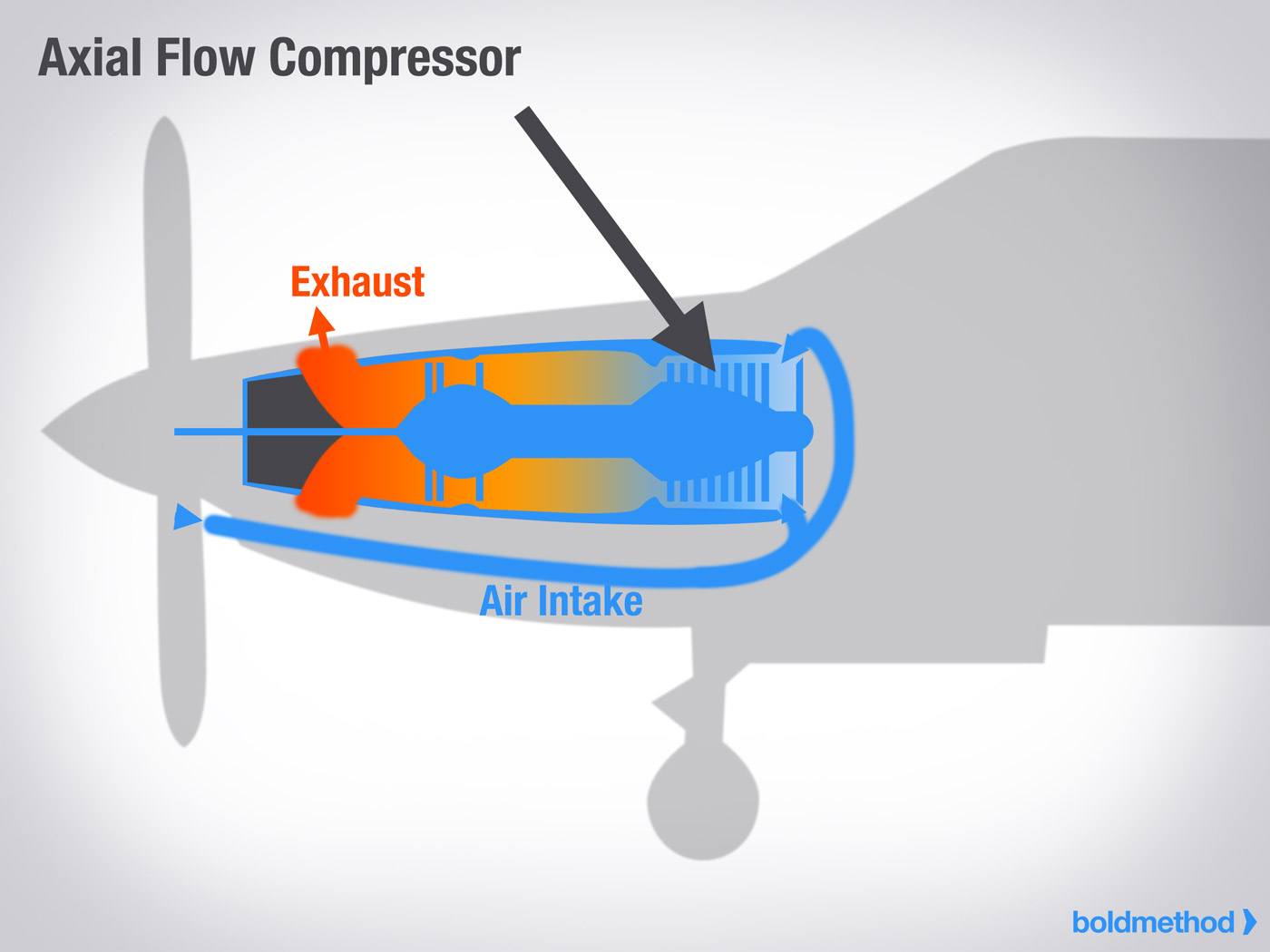
In between each set of compressor blades are non-moving airfoil shaped blades called 'stators'. These stators (which are also called vanes), increase the pressure of the air by converting the rotational energy into static pressure. The stators also prepare the air for entering the next set of rotating blades. In other words, they straighten and stabilize the flow of air.
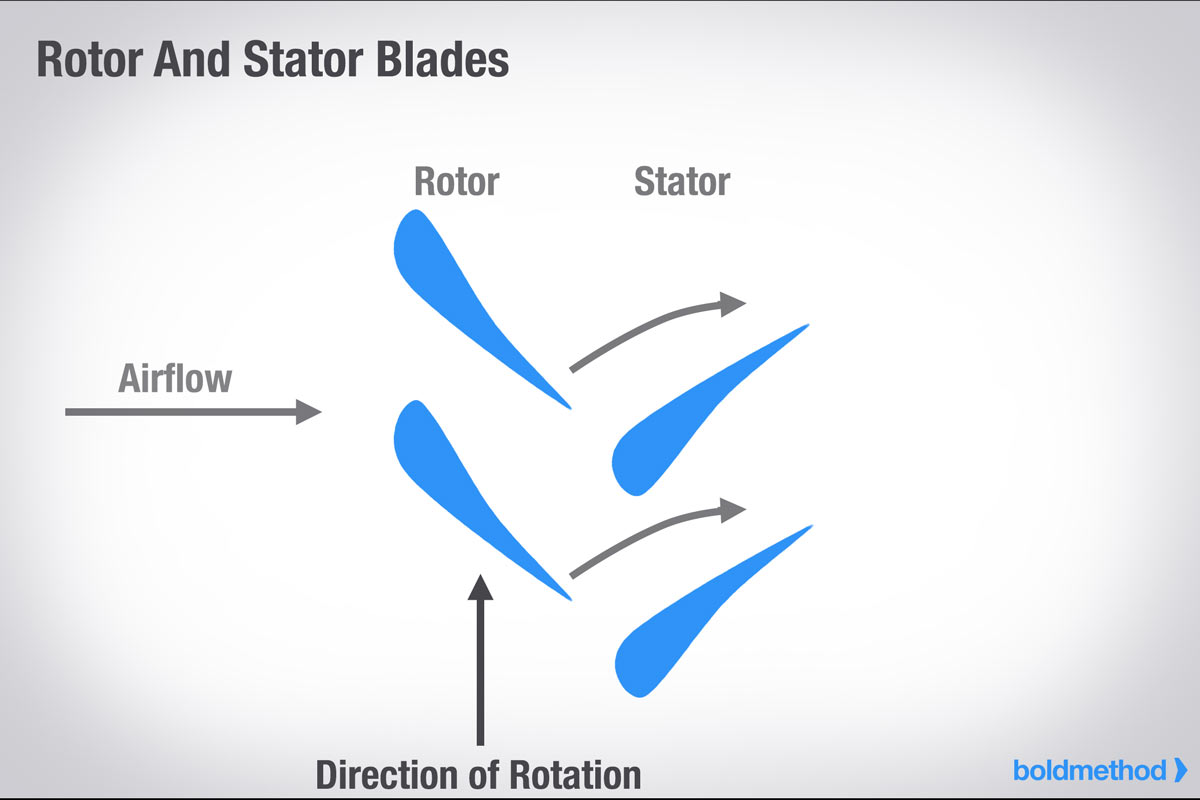
After passing the final axial flow compressor stage, the air moves to a centrifugal flow compressor stage. Air is thrown outwards, away from the engine core, and towards the combustion chambers. The air has made another 90 degree turn.
Combustion
The combustor is where the fire happens. As air exits the compressor and enters the combustor, it is mixed with fuel, and ignited. It sounds simple, but it's actually a very complex process. That's because the combustor needs to maintain a stable, constant combustion of fuel/air mixture, while the air is moving through the combustor at an extremely fast rate.
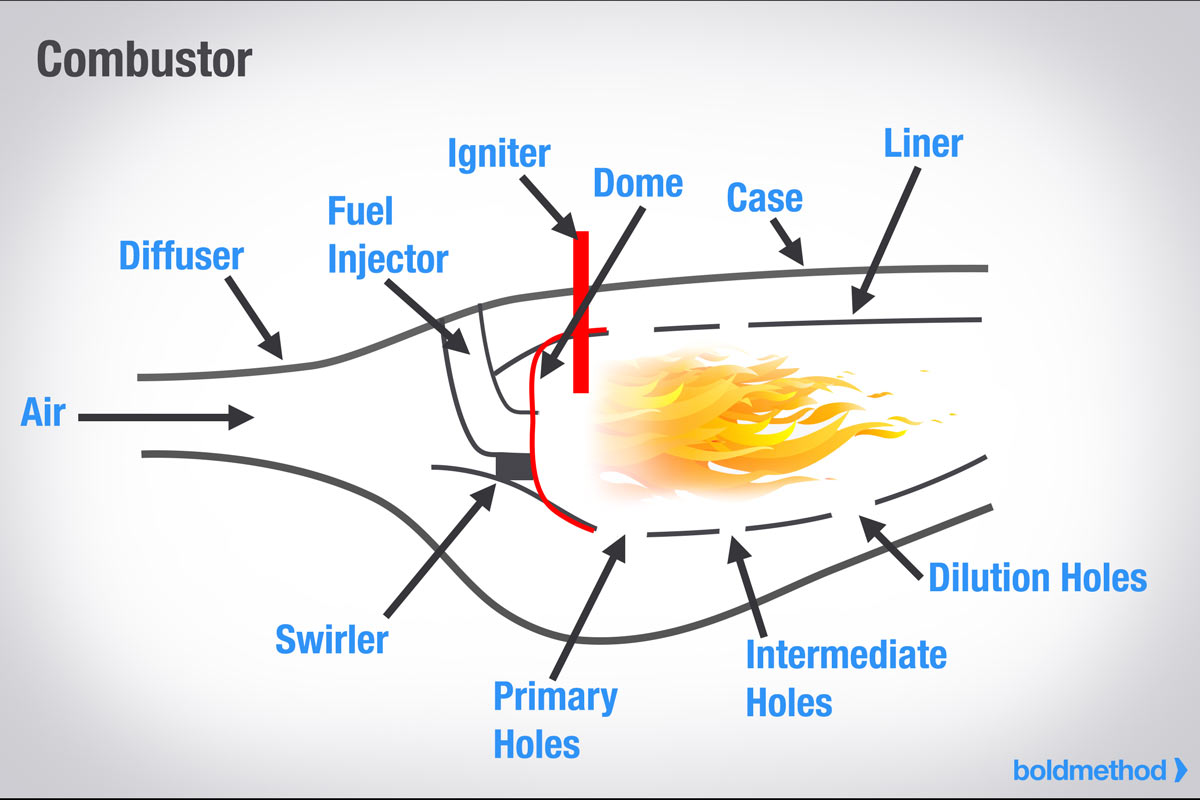
The diffuser slows down the air from the compressor, making it easier to ignite. The dome and swirler add turbulence to the air so it can more easily mix with fuel. And the fuel injector nozzles, as you probably guessed, spray fuel into the air, creating a fuel/air mixture that can be ignited. From there, the liner is where the actual combustion happens. The liner has several inlets, allowing air to enter at multiple points in the combustion zone.
The igniters are the last parts of the combustion stage; they're very similar to the spark plugs in your car or piston-engine airplane. Once the igniters light the fire, it is self-sustaining, and the igniters are turned off (although it's often used as a back-up in bad weather and icing conditions).
The Turbines
Once the air makes its way through the combustor, it flows through the compressor turbine. The turbine is a series of airfoil shaped blades that are very similar to the blades in the compressor. As the hot, high-speed air flows over the turbine blades, they extract energy from the air, spinning the compressor turbine around in a circle, and turning the engine shaft that it's connected to. This is the same shaft that the compressor section and all engine driven accessories are connected to. It's a self-sustaining cycle of power as long as the flame in the combustion chamber is lit. About 70% of total engine power is dedicated to spinning the compressor section and engine driven accessories in a PT6.
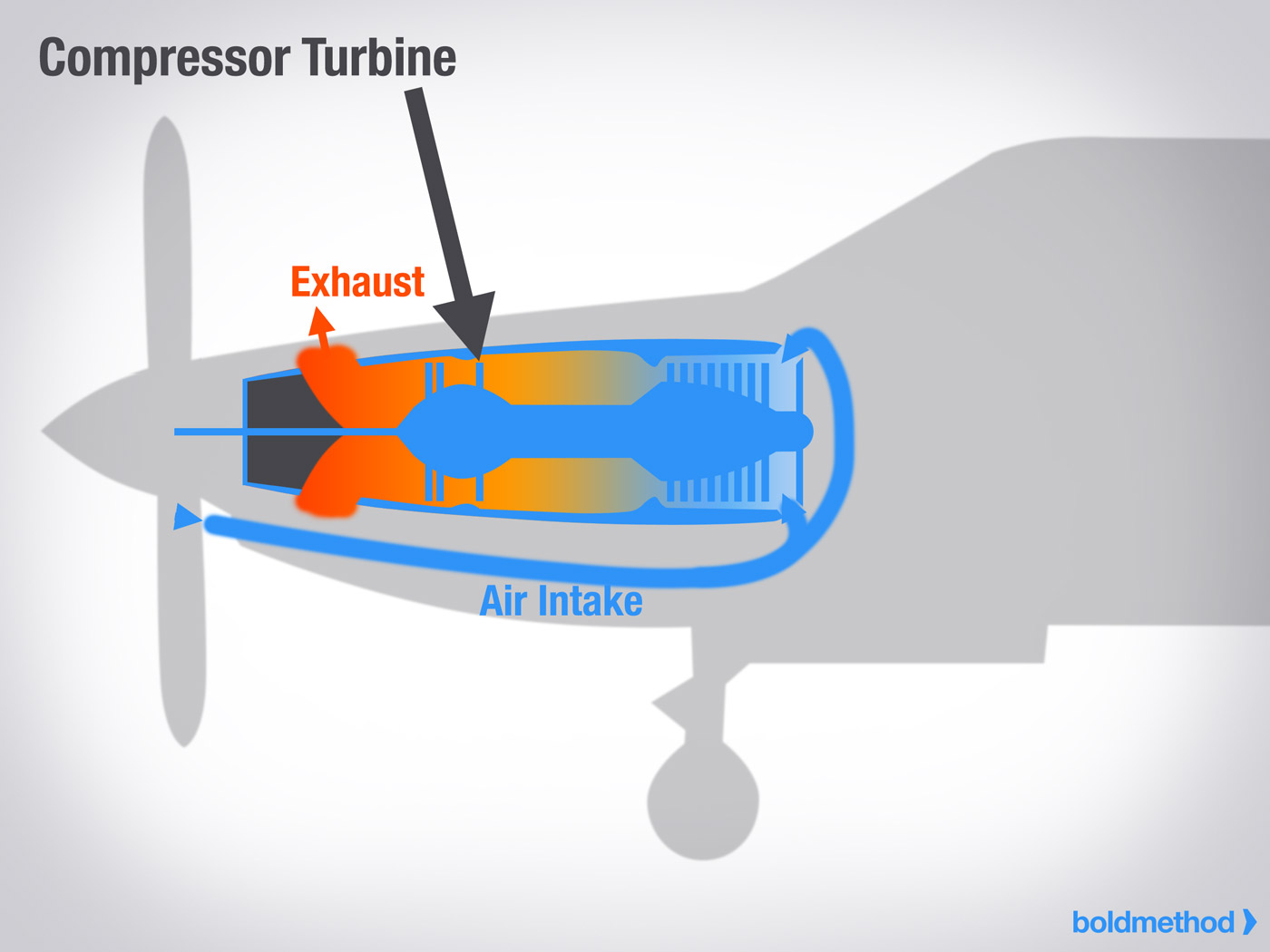
Think you're just re-reading an article about how a turbine engine works? Well here's where things really start to change...
While the compressor turbine may be spinning the aft portion of the engine shaft (compressor section and engine driven accessories) at more than 37,000 RPM, it is NOT spinning the propeller. An entirely separate second engine shaft is located just forward of the compressor turbine.
Airflow moving past the compressor turbine next encounters the engine's power turbines. These power turbines spin just like the compressor turbine, with airfoil shaped blades. This forward engine shaft is directly connected to the propeller, providing the power for it to spin. About 30% of total engine power is dedicated to spinning the propeller in a PT6.
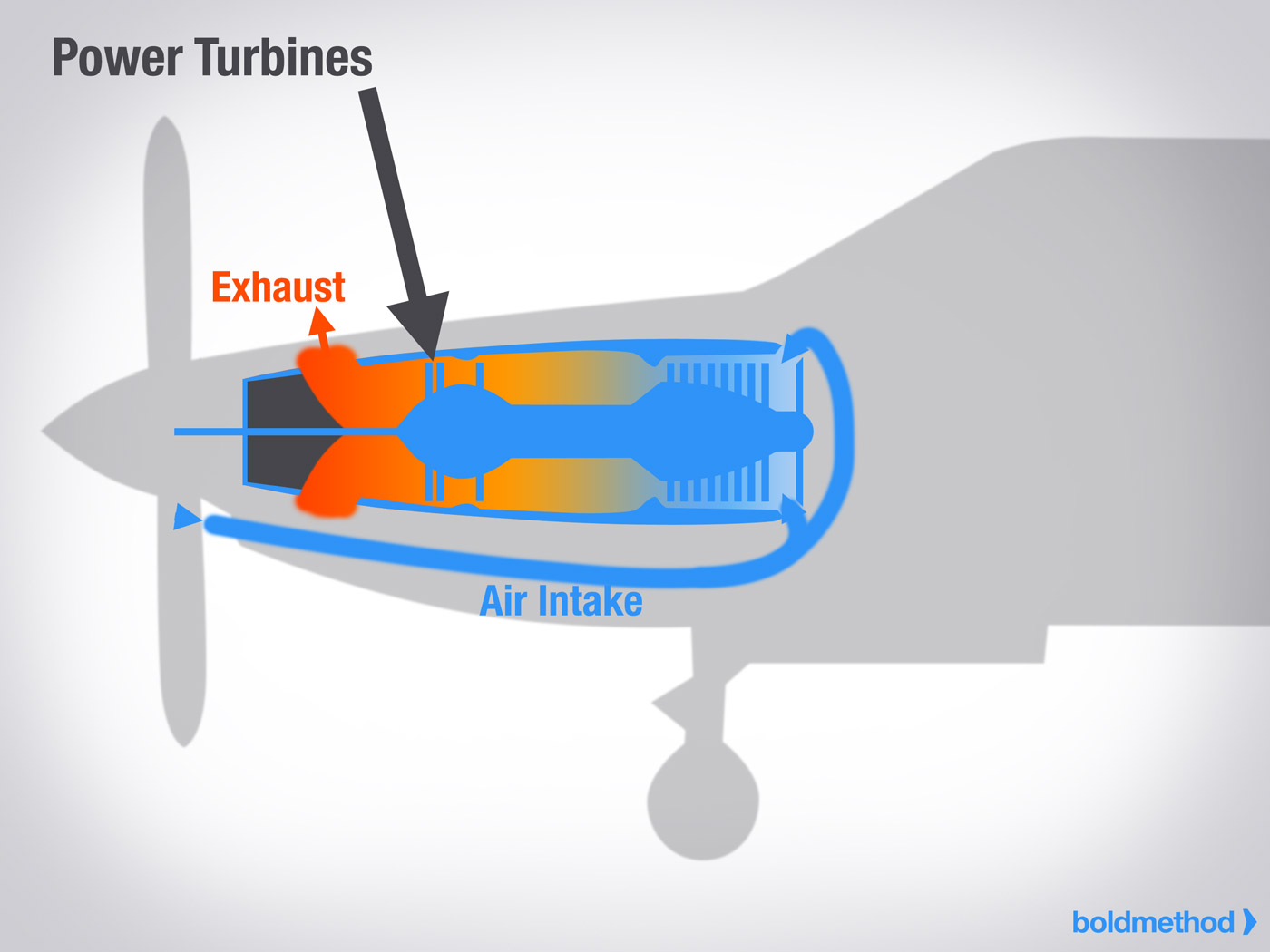
Fun Fact: Because the PT6 is a free-turbine engine, you could, in theory, hold the propeller still in your hand as the engine is started. The only thing spinning the propeller is air passing over the power turbine wheels. Because these turbines are connected to their own engine shaft, separate of the compressor section, it's conceivable that at extremely low power settings the propellor could remain stationary as airflow moves past the turbines... But please, don't try that at home.
Reduction Gearbox
There's no way the propeller on the front of a turboprop could spin at the roughly 33,000 RPM of the power turbines. A series of reduction gears are installed to reduce RPM to a redline of 1900 RPM, as it's limited to in most PT6 engines.
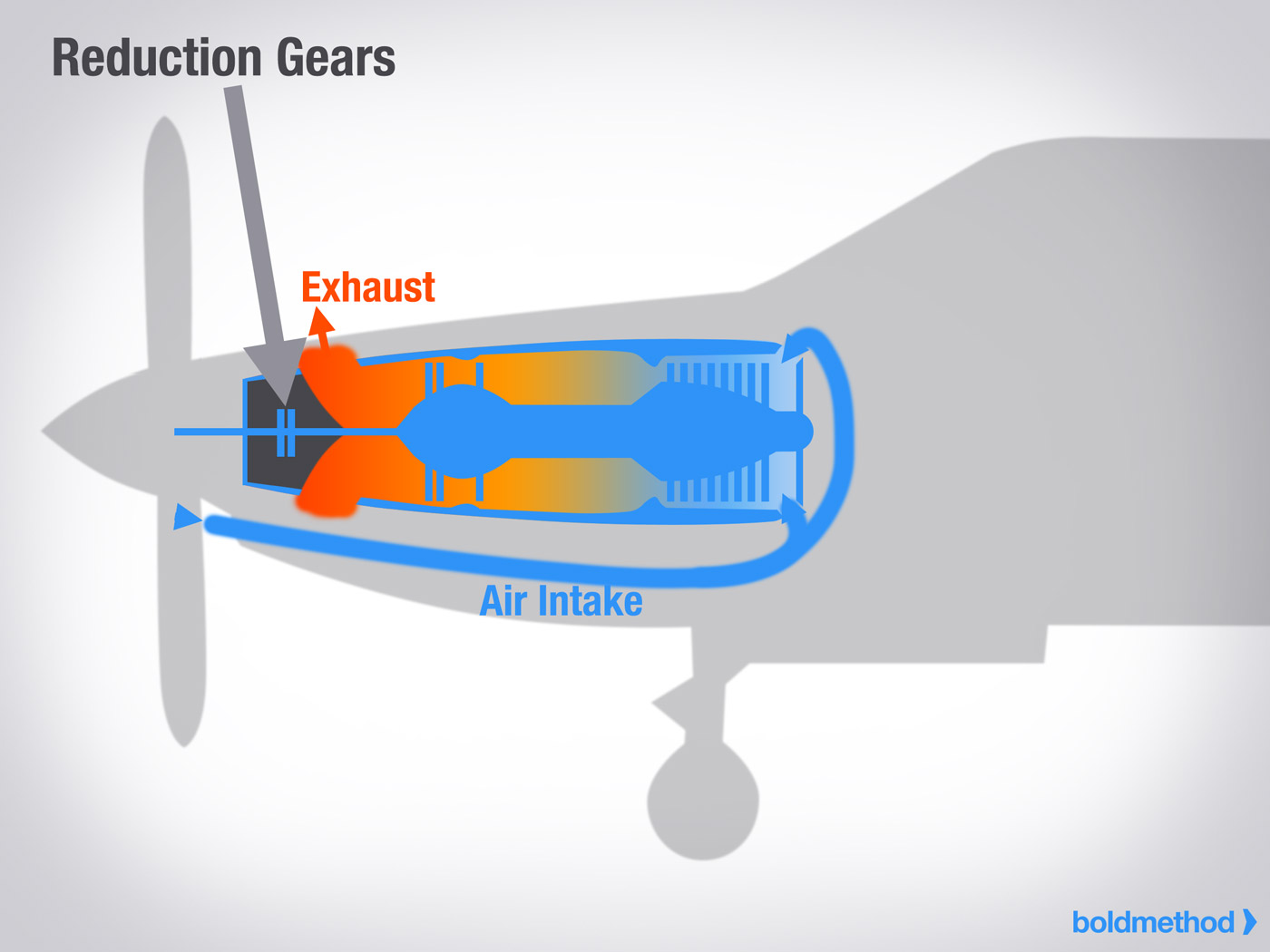
Next? You guessed it...thrust. Now that the propeller shaft is spinning at a reasonable speed, the propeller is able to generate thrust. Read this article to learn how that thrust is created.
Exhaust
There's no practical use for exhaust air once it passes through the power turbines. It's simply diverted away from the engine and out through exhaust pipes. In some aircraft, the POH provides a number that shows the thrust generated directly by exhaust gases. It's usually just a few percent of total generated thrust. The propeller still wins!
Benefits Of A Turboprop
While turboprops generally have lower service ceilings than turbofan or turbojet powered airplanes, they burn significantly less fuel per passenger. Due to the propulsive efficiency curve, they're most efficient at speeds slower than 400 knots. While expensive, they're extremely reliable.
This makes turboprops the perfect engine type for relatively short regional flights. That's why you'll find them on aircraft like the Dash-8-Q400, Cessna Caravan, Pilatus PC-12, and Beechcraft King Air.
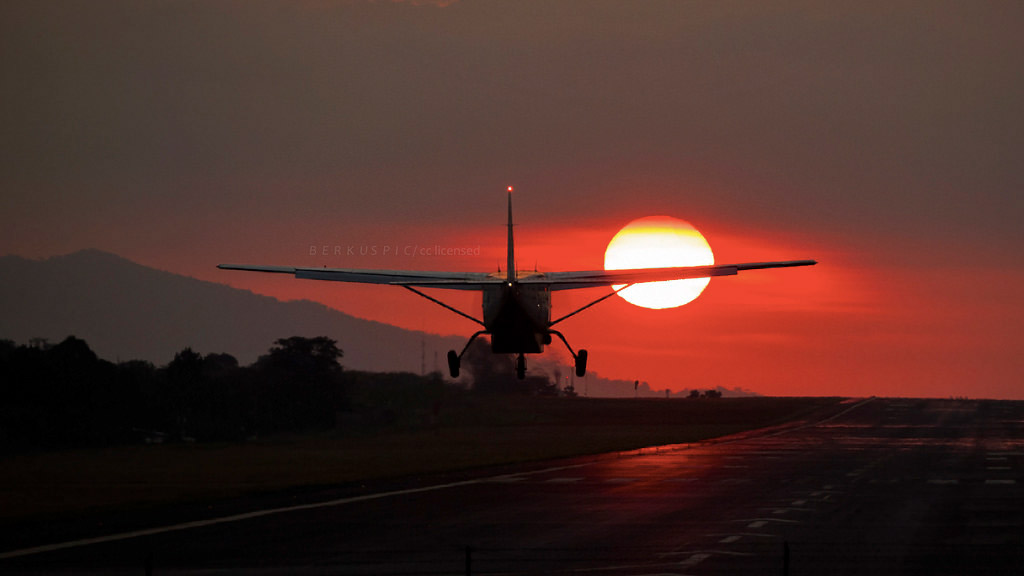
Putting It All Together
Equipping an aircraft with a turboprop engine is the best of both worlds for low altitude regional flights. Air is compressed, combusted, and converted into power that spins the propeller. Compared to piston aircraft, they have relatively few moving parts with much less vibration, making them extremely reliable. Better yet...they burn Jet-A, which is more than a dollar cheaper per gallon than AvGas!
No comments:
Post a Comment